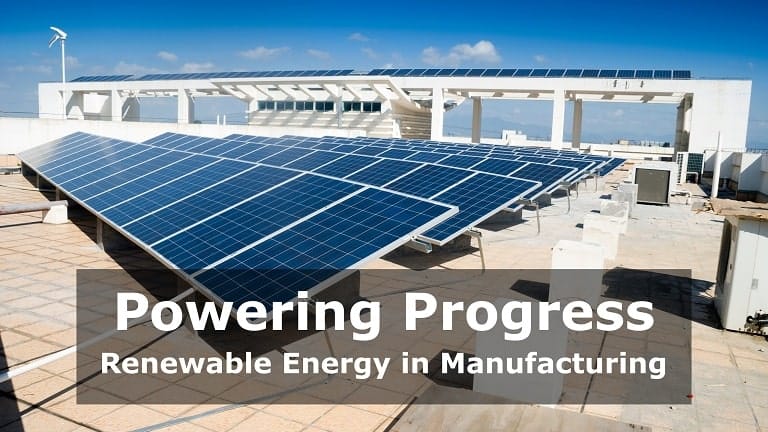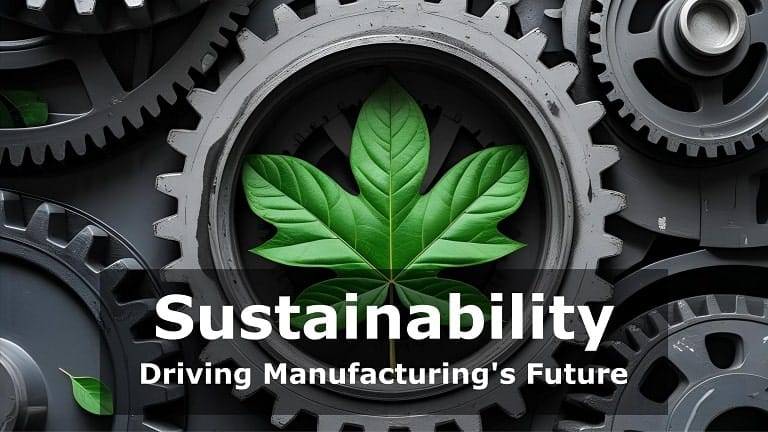In today’s manufacturing landscape, sustainability is no longer a buzzword—it’s a business imperative. As companies face mounting pressure from investors, consumers, and regulators to reduce their environmental impact, leaders who prioritize Environmental, Social, and Governance (ESG) values have emerged as key drivers of both innovation and profitability. Recruiting sustainable manufacturing leaders is no longer just about compliance or corporate responsibility—it’s about future-proofing operations, improving brand credibility, and building a resilient business model. These leaders connect purpose with performance, driving strategies that reduce waste, cut energy costs, attract top talent, and strengthen competitive positioning. In this article, we explore how sustainable leadership transforms manufacturing from the inside out—and why aligning profit with planet starts with the right people at the top.
What Is Sustainable Manufacturing Leadership?

Sustainable manufacturing leadership is the strategic integration of environmental, social, and governance (ESG) principles into the core decision-making processes of manufacturing operations. It goes beyond traditional operational oversight to encompass a responsibility toward long-term ecological balance, social impact, and ethical governance. In today’s competitive landscape, it represents a shift from a purely profit-driven approach to one that balances productivity with sustainability, creating value not just for shareholders, but for employees, customers, and the planet.
At its core, sustainable manufacturing leadership merges operational efficiency with ESG goals. This means streamlining production processes while reducing waste, lowering emissions, conserving resources, and ensuring responsible labor practices. Leaders in this space are tasked with optimizing energy consumption, sourcing materials ethically, and implementing closed-loop systems that contribute to a circular economy. Importantly, they also drive innovation—pursuing cleaner technologies, renewable energy integration, and data-driven sustainability strategies that enhance performance while minimizing harm.
The role of leadership in manufacturing has evolved significantly in recent years. Where once leaders were evaluated solely on output, cost control, and productivity metrics, today’s sustainable leaders are also judged on their environmental footprint, community engagement, and transparency. This evolution reflects a growing recognition that sustainability is not a side initiative but a core driver of business success and risk mitigation. Investors, consumers, and regulators increasingly demand accountability, and companies are responding by embedding sustainability into their leadership competencies.
This new wave of leadership requires a mindset shift—seeing ESG not as compliance, but as a lever for innovation and long-term resilience. Sustainable manufacturing leaders are visionaries who understand that responsible business is good business. They recognize that environmental stewardship and ethical operations are no longer optional but essential to remaining competitive, attracting top talent, and building trusted brands.
Ultimately, sustainable manufacturing leadership is about aligning people, planet, and profit in a way that fosters growth without compromise. It’s a leadership philosophy built not only for today’s demands but for tomorrow’s possibilities.
Why ESG Leadership Matters in Manufacturing
In the manufacturing industry, where efficiency and scale often dominate decision-making, ESG (Environmental, Social, and Governance) leadership introduces a powerful shift—aligning operational goals with long-term responsibility and impact. Leaders who prioritize ESG aren’t just advancing ethical practices; they’re driving measurable business value.
Environmentally, ESG-conscious leaders focus on reducing waste, emissions, and energy consumption. They implement cleaner production methods, adopt renewable energy sources, and promote circular economy principles such as recycling and reuse. These changes lead to lower operational costs and reduced regulatory risks, while also enhancing the company’s environmental reputation—a growing factor in consumer and investor decisions.
Socially, these leaders champion fair labor practices, safe working conditions, and positive community relations. They invest in employee well-being, diversity, and inclusion—factors that improve workforce morale, retention, and productivity. Moreover, companies seen as socially responsible are better positioned to attract younger generations who seek purposeful work and ethical employers.
Governance is equally critical. ESG leaders build strong frameworks for ethical decision-making, compliance, and transparent reporting. They ensure accountability across departments, minimize corruption risks, and maintain regulatory alignment—all of which reduce legal exposure and enhance stakeholder trust.
What makes ESG leadership essential in manufacturing is its direct impact on performance. Sustainable practices reduce operational waste and inefficiencies. Ethical governance reduces fines and reputational damage. Social responsibility fosters a loyal workforce and consumer base. Together, these elements don’t just check boxes—they strengthen a company’s competitive edge.
In short, ESG isn’t an add-on—it’s a foundation for future-focused manufacturing. Leaders who embed ESG into their strategy unlock not only environmental and social value but also long-term profitability and resilience in a rapidly changing global market.

Business Benefits of Sustainable Leadership
Sustainable manufacturing leadership doesn’t just benefit the environment—it significantly enhances business performance across several critical areas. By embedding ESG values into manufacturing processes, organizations unlock cost savings, boost innovation, improve public perception, and attract top talent.
A. Waste Reduction and Cost Efficiency
Leaders who embrace sustainability often adopt lean manufacturing principles and data-driven strategies to minimize waste.
Optimized resource use: Smart inventory systems and efficient supply chain management reduce overproduction and material loss.
Process improvements: Techniques like Six Sigma and just-in-time (JIT) production cut operational inefficiencies.
Real-world example: Toyota’s lean manufacturing system saved millions annually by streamlining production and reducing resource waste.
Result: Less waste translates directly into lower production costs and higher profit margins.
B. Lower Energy Costs and Innovation

Sustainable leaders drive energy-efficient innovation while reducing long-term operational expenses.
Renewable energy adoption: Solar panels, wind energy, and geothermal systems are increasingly used in factories to cut utility costs.
Smart technologies: IoT sensors and AI-driven systems help monitor and optimize energy use in real-time.
Government incentives: Many regions offer tax credits and rebates for companies that invest in green technology.
Result: Lower utility bills, stronger regulatory compliance, and faster ROI on sustainable infrastructure upgrades.
C. Enhanced Brand Image and Market Trust
Modern consumers value brands that act responsibly and transparently.
Positive public perception: Companies seen as eco-friendly and ethical gain consumer loyalty.
Market case study: Unilever’s “Sustainable Living” brands grew 69% faster than the rest of its business and delivered over 75% of the company’s growth.
Result: Stronger brand equity and increased market share.
D. Talent Magnet: Attracting the Next Generation
Purpose-driven leadership is key to attracting young professionals.
Gen Z and Millennials seek employers aligned with their values—particularly around climate, ethics, and social justice.
Employer branding: Companies known for their ESG efforts stand out in competitive hiring markets.
Result: Easier recruitment, improved retention, and a more engaged workforce.
Sustainable Leadership as a Competitive Advantage
Sustainable leadership in manufacturing is no longer a “nice-to-have” — it’s a strategic differentiator. Companies that embed Environmental, Social, and Governance (ESG) principles into leadership not only strengthen their ethical foundation but also gain a significant edge in the marketplace.
Today’s consumers, investors, and employees are increasingly drawn to companies that demonstrate genuine commitment to sustainability. A leader who actively champions ESG can guide the organization toward long-term resilience by anticipating environmental risks, staying ahead of regulations, and making innovation-driven decisions. In fact, ESG-oriented leaders are more likely to foster adaptive cultures that embrace clean technologies, green supply chains, and transparent governance structures.
Multiple studies have validated the link between ESG and business performance. A Harvard Business School study revealed that companies with strong ESG performance had lower capital costs and outperformed peers in stock returns. Similarly, a McKinsey report found that businesses integrating ESG into their operations experienced higher employee satisfaction, increased productivity, and stronger customer loyalty — all of which are critical drivers of competitive advantage.
Moreover, sustainability leadership signals long-term thinking. It reflects an organization’s readiness to adapt to climate risks, shifting regulations, and the increasing demand for responsible manufacturing. It also opens the door to innovation—whether through the development of low-impact materials, energy-saving production techniques, or eco-friendly product design.
In manufacturing, where margins are tight and operational agility is essential, ESG-focused leadership gives companies a unique positioning. It allows them to reduce risks, improve stakeholder relationships, and build future-proof systems. Rather than reacting to global challenges, sustainable leaders proactively design systems that benefit both profit and planet.
In essence, sustainable leadership is not just about doing good—it’s about doing smart business. And those who recognize this early will lead the future of manufacturing.
What to Look for When Recruiting Sustainable Leaders
As sustainability becomes a core pillar of modern manufacturing, hiring the right leaders is crucial. It’s no longer enough to find someone with traditional management expertise—today’s manufacturing environment demands leaders who think systemically, act ethically, and understand how sustainability connects to business value. So what should hiring managers look for when recruiting sustainable manufacturing leaders?
When assessing candidates, focus first on these key leadership traits:
Systems thinking: ESG-conscious leaders must understand the interconnectedness of operations, environmental impact, supply chain dynamics, and stakeholder expectations. They see beyond departmental silos and can identify long-term ripple effects of decisions.
Accountability and transparency: Effective sustainable leaders are open about their strategies, progress, and challenges. They are not afraid to report accurately, admit gaps, and set measurable ESG goals.
Adaptability and innovation: The sustainability landscape is evolving rapidly. Leaders should be agile and open to adopting new technologies, processes, and regulatory frameworks.
Ethical decision-making: Integrity is at the heart of ESG. Leaders must uphold high standards in governance, compliance, and social responsibility.
Next, hiring managers should design specific evaluation questions and criteria, such as:
“Can you describe a time when you implemented a sustainability initiative that also improved business performance?”
“How do you balance environmental impact with production goals?”
“What sustainability KPIs have you worked with, and how do you track them?”
Look for candidates who can articulate clear examples, reference metrics, and show a track record of influencing both environmental and financial outcomes.
Finally, cross-functional knowledge is essential. The best candidates often bring a hybrid skill set—combining technical expertise (e.g., engineering, logistics) with fluency in ESG frameworks, environmental science, or corporate responsibility. This unique combination enables them to lead cross-departmental initiatives, translate sustainability goals into action, and engage stakeholders from shop floor to boardroom.
In sum, recruiting sustainable leaders requires a thoughtful, values-driven approach. These leaders are not only stewards of the planet but also strategic assets for long-term business success.
Conclusion
Sustainable manufacturing leadership isn’t a trade-off between ethics and economics—it’s a roadmap for long-term success. Leaders who embed ESG principles into every layer of operations unlock real business value: from reduced costs and risk to stronger brand equity and workforce engagement. As sustainability continues to shape the future of manufacturing, recruiting visionary leaders who can bridge the gap between performance and purpose will be the defining factor for companies that want to lead—not lag. The green bottom line is clear: profitability and planet can thrive together when guided by the right leadership.
Ready to future-proof your operations with leaders who drive both profit and planet? Connect with JRG Partners’ manufacturing executive recruiters. With deep industry expertise, we specialize in identifying and placing top talent who bring both ESG vision and manufacturing excellence to your team.


